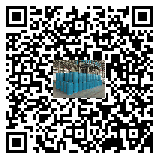Textile wetting agent: the "invisible magician" in the textile industry
In the production process of textiles, every step from raw materials to finished products cannot be separated
from the participation of water. However, the interaction between water and fiber is not always smooth. In order
to allow water to better penetrate and wet the fiber, improve processing efficiency and product quality, a
chemical additive called "textile wetting agent" came into being. Although it is inconspicuous, it is an indispensable
"invisible magician" in the textile industry. So, what is a textile wetting agent? What are its application ranges?
What is a textile wetting agent?
A textile wetting agent is a surfactant that can reduce the surface tension of water, making it easier for water to spread
and penetrate on the fiber surface. Simply put, it is like a "peacemaker" to help water and fiber, two partners who were
not originally "in tune", get along better. One end of the wetting agent molecule is hydrophilic (likes water) and the other
end is lipophilic (likes fiber). Through this special structure, it can build a bridge between water and fiber and promote
the combination of the two.
Application scope of textile wetting agents
The application of textile wetting agents runs through many links of textile production. The following are its main
application scenarios:
Pretreatment stage: decontamination and refining
Desizing and scouring:
During the desizing and scouring process of cotton fabrics, wetting agents can help water quickly penetrate into the fiber,
dissolve and remove natural impurities and slurry, and improve the effect of subsequent processing.
Bleaching and washing:
During the bleaching and washing process, wetting agents can enhance the wettability of water on the fiber, make the bleach
and detergent more evenly distributed, and improve the decontamination effect.
Dyeing and printing stage: uniform coloring and clear pattern
Dyeing:
Wetting agents can promote the uniform distribution of dyes on the fiber surface, reduce color spots and color differences,
and improve dyeing quality. Especially when using disperse dyes to dye polyester, wetting agents can effectively reduce the
aggregation of dyes and improve the dyeing rate.
Printing:
During the printing process, wetting agents can help the printing slurry better penetrate into the fiber, making the pattern
clearer and brighter, while reducing the difficulty of washing after printing.
Finishing stage: Functional improvement and hand feel improvement
Waterproof and oil-proof finishing: Although the wetting agent itself is hydrophilic, in some special finishing, it can cooperate
with other auxiliaries to help the waterproof and oil-proof agent form a uniform film on the fiber surface and improve the
functionality of the fabric.
Soft finishing: In soft finishing, the wetting agent can help the softener better penetrate into the fiber and improve the
softness and hand feel of the fabric.
Special processing: Improve efficiency and environmental protection
Low temperature dyeing: The wetting agent can reduce the dyeing temperature of the dye, reduce energy consumption,
and improve the dyeing efficiency.
Water saving and emission reduction:
By improving wettability, the wetting agent can reduce the amount of water used in the processing process, reduce
wastewater discharge, and meet environmental protection requirements.
The importance of textile wetting agents
Although the amount of textile wetting agents is not large, their role cannot be underestimated. It can not only improve
processing efficiency and reduce energy consumption, but also significantly improve the quality and functionality of textiles.
For example, in the dyeing process, the use of wetting agents can reduce the waste of dyes, reduce the residual dyes in
wastewater, and reduce pollution to the environment. In addition, wetting agents can also improve the feel, gloss and
antistatic properties of fabrics, and increase the added value of products.
Conclusion
Textile wetting agents, the "invisible magician" in the textile industry, have brought many conveniences to the production
of textiles with their unique properties and wide applications. With the advancement of science and technology and the
improvement of environmental protection requirements, textile wetting agents are also constantly upgrading and
developing in a more efficient and environmentally friendly direction. In the future, it will continue to play an important
role in the textile industry and promote the sustainable development of the industry.


